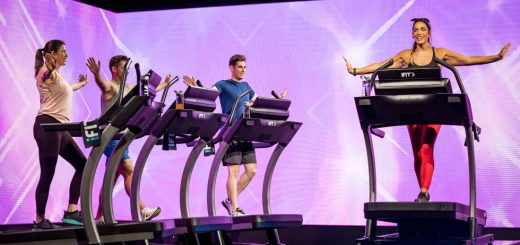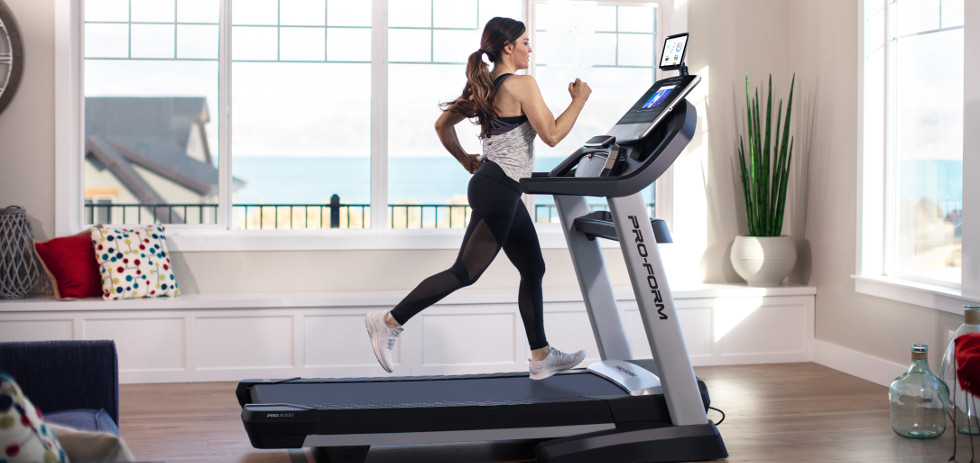Understanding The Difference Between Aerobic And Anaerobic Exercise

As you prepare to start an exercise program, you may hear people discussing aerobic and anaerobic exercise. Understanding the difference between these two types of exercise can help you develop a routine and determine the exercises that will help you best accomplish your goals.
Here is what you need to know about aerobic and anaerobic exercises and the benefits of each:
What is aerobic exercise?
Aerobic exercise describes most of the types of physical activity that people associate with getting fit. This type of exercise can also be referred to as ‘cardio’. The goal during these workouts is to raise the heart rate and breathing rate to a level that the person can maintain throughout the workout. It requires the heart to pump oxygenated blood to the muscles so that they can continue to perform each movement.
Types of Aerobic Exercise
With such a wide variety of activities counting as aerobic exercise, just about anyone can find something that will interest them. Some ideas to try include:
What is anaerobic exercise?
Anaerobic exercise, on the other hand, refers to physical activities that cause you to get out of breath. These types of exercises happen in short bursts and can result in a buildup of lactic acid. Athletes often use this type of exercise to encourage power and endurance.
According to a 2008 study, baseball players who did anaerobic exercises increased their power to perform their sport. Sports that last longer than a few minutes also incorporate aerobic exercises as well to ensure that the body can maintain its performance.
Examples of Anaerobic Exercise
Anaerobic exercises include activities such as:
- Sprinting
- Weightlifting
- High-intensity interval training (HIIT)
What are the differences between aerobic and anaerobic exercises?
Both aerobic and anaerobic exercise provide many benefits. They will both benefit your overall health, as well as help you gain muscle, burn fat, and increase your exercise stamina.
The biggest difference between aerobic and anaerobic exercise lies in how the body gets its energy. For anaerobic exercise, the muscles will use stored energy sources to fuel itself rather than oxygen, which includes breaking down glucose.
Aerobic exercise, however, requires continuous and peak oxygen consumption. This explains why your breathing rate and heart rate increase as you perform these moves. Your body will naturally take in more oxygen to fuel the muscles and give them the energy they need to sustain the movement for an extended period of time. Lung capacity can even be improved by as much as 5 to 15 percent just from aerobic exercise.
What are the health benefits of aerobic and anaerobic exercises?
Aerobic and anaerobic exercises both offer plentiful benefits for those who incorporate them into their regular routines.
Health benefits of aerobic exercise include:
- Strengthening your heart and reducing your resting heart rate
- Increasing the number of red blood cells for better oxygen distribution
- Aids in weight management and keeps weight off
- Strengthening your immune system
- May reduce fatigue during exercise
- Boosting mood
Anaerobic exercise health benefits include:
- Strengthening your bones and muscles
- Building muscle mass and power
- Improving endurance and cardiorespiratory efficiency
- Burning fat by increasing your metabolism
- Increasing stamina
Scientists and researchers have examined the health benefits of exercise on various bodily systems and numerous studies have found that they benefit the cardiovascular system. Back in 1996, the American Heart Association released research that examined how exercise improved the health of a number of bodily systems, including the hormonal system, metabolic system, respiratory system, neurological system, and hemodynamic system, as well as expressing the importance of maintaining aerobic endurance in a comprehensive exercise program.
The benefits of including regular aerobic and anaerobic exercise into your routine reach nearly all your bodily systems. The improved mental and physical health will help boost your quality of life and give you more energy to enjoy the activities that matter the most to you. Consider your fitness goals, including muscle building, toning, and energy levels, and begin to build a routine that will work best for you.
DISCLAIMER: This post is not intended to replace the advice of a medical professional. The above information should not be used to diagnose, treat, or prevent any disease or medical condition. Please consult your doctor before making any changes to your diet, sleep methods, daily activity, or fitness routine. ProForm assumes no responsibility for any personal injury or damage sustained by any recommendations, opinions, or advice given in this article. Always follow the safety precautions included in the owner’s manual of your fitness equipment.
Sources:
https://www.ncbi.nlm.nih.gov/pmc/articles/PMC5329739/
https://www.medicinenet.com/aerobic_exercise/article.htm
https://www.proform.com/blog/effective-aerobic-exercise-ideas-at-home/
https://www.proform.com/blog/4-main-benefits-of-having-an-exercise-bike-at-home/
https://www.proform.com/blog/hiit-workout-to-do-on-your-treadmill/
https://www.healthline.com/health/fitness-exercise/difference-between-aerobic-and-anaerobic
https://lunginstitute.com/blog/can-exercise-improve-lung-function/
https://www.livestrong.com/article/255055-what-is-the-difference-between-aerobic-anaerobic-exercise/
https://www.ahajournals.org/doi/full/10.1161/01.cir.94.4.857











